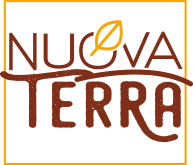Quinoa is an annual herbaceous plant that belongs to the Chenopodiaceae family, as do spinach and beets, and hence its scientific name – Chenopodium. The seeds of this plant provide, when subjected to grinding, a flour that is rich in starch. This allows quinoa to be classified as a commodity grain, despite its not belonging to the gramineae family. When compared to other grains, it differs in its high protein content and its total lack of gluten.
Origin
Typical of the Andean regions of Latin America, quinoa originates in areas adjacent to Lake Titicaca in Peru and Bolivia.
Its history is very ancient since this plant was cultivated by the Mayas and Incas as early as the fifth millennium B.C., as evidenced also by archaeological artifacts found inside graves in Chile and in various parts of Peru. Pedro de Valdivia, the Spanish conquistador and founder of Santiago de Chile, was the first to describe the methods of cultivation for quinoa. He also related on the advanced technological processes used by the Indians in the production of grain for him.
WHY IT SHOULD BE EATEN
A small seed that is light in color and slightly flattened in shape, quinoa is very high in protein, almost double that of rice. It contains vitamin B2 and magnesium, two components that together can help reduce headaches, and prevent hypertension and osteoporosis.
It is also rich in vitamins B6 and E, zinc, and iron. Limitless as a source of fiber, quinoa is, above all, recommended to those who follow a low-calorie diet.

Quinoa can be used like other grains in the preparation of hearty or light soups, or to accompany meats and vegetables. Quinoa flour is an excellent alternative to traditional flour for making bread, biscuits, farinatas, or as a base for making foods for babies and toddlers.
Quinoa seeds are covered with a very bitter substance, saponin, which protects the seeds from bird and insect attack. You must, therefore, rinse them thoroughly under running water, and then dab them with a clean dishtowel.
Before cooking, quinoa seeds should be lightly browned for a few minutes in a frying pan with a little oil or a bit of butter; in this way its taste will be much more intense.
You will then cook the quinoa for 10-15 minutes, in a quantity of boiling water that is double quinoa's volume.
For example, if you want to prepare 100 grams, you will need 200 milliliters of water.
Remember to add salt only after cooking, otherwise the seeds will become hard.

Quinoa is the only plant food that contains all eight essential amino acids, making it ever so important in vegan and vegetarian diets. And not just for those.
In fact, it's known that in 1975, NASA defined this same quinoa as the ideal product to be included in the diet of astronauts in their space travels.




 E-Shop
E-Shop

 Back
Back








